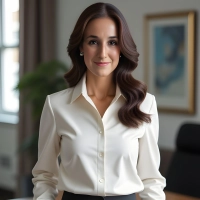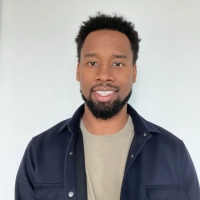25 Strategies for Cultivating a Personal Brand as a CMO
In the ever-evolving world of marketing, Chief Marketing Officers face unique challenges in establishing their personal brand. This comprehensive guide unveils key strategies for CMOs to cultivate a powerful and authentic presence in the industry. Drawing from insights shared by seasoned experts, the article explores innovative approaches to brand building that go beyond traditional methods.
- Engage Authentically to Build Genuine Connections
- Create Content That Challenges Industry Norms
- Develop a Cross-Platform Ecosystem for Authority
- Focus on Purpose-Driven Technology Leadership
- Share Real-Time Lessons and Problem-Solving Insights
- Deliver Results and Empower Others
- Bridge Strategy and Execution Across Platforms
- Own a Narrative at Industry Intersections
- Advocate for Integrated, Disciplined Marketing Approaches
- Cultivate Clarity in Your Core Message
- Communicate Like a Person, Not a Brand
- Develop Proprietary Frameworks for Industry Impact
- Tell Stories That Educate and Inspire
- Share Real-Time Insights During Actual Challenges
- Dominate Your Specific Area of Expertise
- Educate Across Platforms to Cultivate Leadership
- Challenge Prevailing Views with Original Thinking
- Align Your Brand with Your Authentic Self
- Share Firsthand Experiences in Emerging Technologies
- Be the Helpful Guide in Others' Stories
- Consistently Provide Value-Driven, Authentic Content
- Share Insights from Real Client Conversations
- Offer Practical Lessons from Wins and Flops
- Lead with Transparency and In-the-Trenches Insights
- Combine Long-Form and Live Content Strategically
Engage Authentically to Build Genuine Connections
My approach to personal brand building as a CMO is straightforward: Focus on genuine two-way engagement instead of shouting into the void.
When I finally committed to building my presence on X earlier this year, I had no grand strategy document or content calendar. I just knew I was tired of seeing executives treat social media as a corporate newsletter.
Within two months, I grew from zero to over 1,300 engaged followers by following one simple principle: people connect with people, not broadcasting towers.
I spend 70% of my time engaging in real conversations rather than just pushing content. Posts where I actively jump into discussions generate four times higher engagement rates than my company announcements or thought pieces. And when I make it a point to respond thoughtfully to at least half the comments on a post, that content also reaches more people.
After 12+ years leading marketing teams across Sendcloud, wetracked.io, and my own venture Dealify (which I successfully exited), I've learned that true thought leadership isn't built through perfectly polished think pieces. It's built in the trenches of daily conversations where you're actually helping people solve problems. The industry is drowning in content but starving for connection. That's the gap I'm focused on filling.
Create Content That Challenges Industry Norms
My approach to personal branding is radically simple: I just create content that I would want to read. And it works. In an era where everyone is obsessing over algorithms and AI content, I've found the most powerful differentiator is simply being genuinely human.
One strategy that's been particularly effective is what I call "controversial fundamentals" - taking industry best practices that everyone knows but few actually implement, and discussing them openly. For example, when everyone was chasing traffic metrics and top-of-funnel content, I started advocating strongly for bottom-of-funnel first. "ToFu is nice for user metrics, but the bank doesn't care about eyes," I'd say in podcasts and LinkedIn posts. This cut through the noise because it challenged conventional wisdom while actually being more effective.
This isn't just theoretical. When I was building my personal brand after leaving agency life, I deliberately positioned myself against the "growth hacks" and shortcuts that dominated industry conversations. Instead, I shared actual client cases - like when I helped a client who had spent $100,000 on content with three different agencies but saw traffic crash after initial success. By breaking down exactly what went wrong and how we fixed it, I established myself as someone who valued sustainable results over vanity metrics.
The key to this approach is consistency and authenticity. People are drawn to real expertise shared in a human voice. As AI content becomes more prevalent, your personality and real-world experience become your most valuable branding assets. People will search for and find things with AI, but they will still buy from humans. Your personal brand needs to emphasize the human elements that no AI can replicate.

Develop a Cross-Platform Ecosystem for Authority
As a growth-focused marketing head and fractional CMO for multiple startups, I've built a robust, cross-platform content ecosystem that reinforces my reputation as a data-driven strategist. I leverage LinkedIn, podcasts, my blog www.sanjayb.com, and authorship to share actionable insights and drive organic engagement.
For example, my ebook "Starting Up: A Comprehensive Guide to Startup Content Marketing" not only solidifies my expertise in scalable marketing frameworks but also serves as a comprehensive resource for founders and marketers.
As the top voice on LinkedIn for content marketing, I consistently share expert opinions that resonate with industry professionals. My insights have been featured on reputable platforms such as marketerinterview.com and recognized by top listing sites like Designrush, further validating my authority and approach.
This integrated strategy creates a dynamic feedback loop: analytical LinkedIn posts spark meaningful discussions that lead to podcast invitations, which in turn drive targeted traffic to my blog, company website, and book. There, in-depth case studies, methodologies, and frameworks like AARRR convert visitors into quality leads.
By seamlessly interlinking these channels without relying on paid promotion, I've secured high-value contracts for myself and my organization, establishing myself as the go-to expert in analytics-led strategies. My personal blog/portfolio further amplifies my authority, enabling prospects to confidently evaluate my expertise and ultimately fostering trust and new business opportunities.

Focus on Purpose-Driven Technology Leadership
In the beginning, I cast a wide net, covering a broad range of tech topics in an effort to show versatility and appeal to different corners of the industry. While this helped me explore a lot of ground and build some initial momentum, it also made it harder for my personal brand to stand out.
As CMO for an agency focused on the emerging technology sector, building my personal brand has been an intentional process that has evolved alongside my leadership journey.
Today, I've refined my personal brand even further. I now focus on a very specific theme: the use of emerging technology for environmental and social good. That clarity has been a game-changer not just for visibility, but for real impact. It has also helped me build a community of like-minded leaders, opened the door to more thoughtful conversations, and allowed me to contribute to something bigger than buzzwords or trends.
For me, personal branding isn't about self-promotion. It's about using your voice to make space for purpose, to lead with clarity, and to inspire action in a way that aligns with what you stand for.

Share Real-Time Lessons and Problem-Solving Insights
For me, personal branding as a CMO isn't about showing off; it's about showing up. I see it as a daily habit, not a campaign. The strategy that has worked wonders for me is sharing what I'm learning in real-time, not just polished success stories. I've noticed that people don't connect with perfection; they connect with progress.
In our agency, I'm always knee-deep in experiments, campaigns, and client challenges (the fun kind). I share the wins, the flops, and the lessons on platforms like LinkedIn and inside niche communities. The magic? When you show people how you actually solve problems, you don't just become another marketer; you become a go-to resource. That's how you build real thought leadership, not just by posting quotes or buzzwords.
So if you're thinking about your brand, don't overthink it. Start by documenting what you already do daily. That's where the trust and credibility start accumulating.

Deliver Results and Empower Others
As a CMO, I believe the strongest personal brand is built by consistently delivering results and making sure others see the impact of your work. All of my clients have come through word of mouth--people who've worked with me directly, seen the outcomes, and shared those wins within their networks.
One strategy I use to cultivate my brand and thought leadership is sharing real-world successes with clear, actionable insights. I don't just talk about results--I break down the how behind the impact to empower others and build credibility.
At the end of the day, your brand is what others say about you when you're not in the room. The best way to shape that is to perform, deliver, and let your work speak for itself.
Bridge Strategy and Execution Across Platforms
As a CMO, I view personal branding as an extension of professional credibility—it's not just about visibility, it's about adding value to the conversation. My approach centers on authenticity and consistency, especially in how I communicate across platforms, engage with peers, and represent my company in the market.
One strategy I consistently use to cultivate my personal brand is sharing insights that bridge strategy and execution—particularly where marketing meets sales, technology, and partnerships. I lean into real-world observations, lessons learned, and forward-looking trends, and I'm intentional about connecting those insights to current challenges decision-makers are facing in the IT industry.
By doing this through industry publications, panels, social platforms like LinkedIn, and collaborative content with our partners, I've been able to establish a brand built on trust, relevance, and a bias for action. It's not about promoting yourself—it's about showing up with something useful to say, time and time again. That's how you stay top of mind and create genuine influence.
Own a Narrative at Industry Intersections
As a CMO, personal branding isn't just a vanity project--it's a strategic asset that amplifies your company's voice, builds trust with customers, and attracts top-tier talent and partnerships. My approach to personal branding centers on being a signal in the noise--sharing insights that cut through trends and provide genuine clarity in a rapidly evolving landscape.
One core strategy I use:
Own a specific narrative at the intersection of your expertise and industry change.
For example, rather than just commenting broadly on "marketing trends," I focus on how AI is transforming storytelling and customer experience--a space where I can contribute original insight, share real-world use cases, and spark future-facing conversations.
Here's how I cultivate that:
• Consistent content cadence: I post weekly on LinkedIn--mixing short-form takes, behind-the-scenes campaign lessons, and curated insights.
• Signal amplification: I guest on relevant podcasts, contribute to niche industry newsletters, and speak at events where the audience aligns with the brand I want to build.
• Engage like a peer, not a broadcaster: I treat social media as a conversation, not a soapbox. Commenting on others' work, asking smart questions, and amplifying rising voices keeps the brand human and credible.
Ultimately, personal branding is about earning trust at scale. When done right, your voice becomes a magnet--for the right people, partnerships, and opportunities.

Advocate for Integrated, Disciplined Marketing Approaches
As a five-time CMO, my personal brand is built on both experience and a guiding philosophy. Over the years, I've learned that there's no one-size-fits-all solution in marketing. It's not about quick fixes or chasing trends; it's about developing a thoughtful, strategic approach. My core belief is simple: "There's no silver bullet in marketing."
Marketing is an intricate, interconnected system, much like a finely tuned engine. Every part, from brand vision to customer experience, demand generation to data analytics, needs to work in sync. If one piece isn't aligned, the whole machine can break down. And that's true whether you're in B2B or B2C.
When it comes to establishing thought leadership, I focus on challenging the status quo, offering fresh takes on marketing strategy, and pushing for a disciplined, integrated approach. This philosophy has resonated with both seasoned professionals and emerging leaders who are tired of superficial advice and want actionable insights. I'm committed to providing real value, whether that's through sharing lessons learned the hard way or by being candid about my mistakes. That's how I've earned the trust of my peers and built a meaningful connection with the industry.

Cultivate Clarity in Your Core Message
I learned this the hard way.
Your personal brand is not built by showing up everywhere. It is built by showing up with something to say.
As a CMO, I spent years crafting messaging for others. But it took time to realize that my own brand needed the same clarity and intention. Not just polished posts or clever headlines, but a clear point of view.
One strategy that changed everything for me:
Define one idea you want to be known for and build around that.
For me, it is this:
Attention follows clarity, not noise.
That idea became my filter. It shapes what I write, what I say no to, and how I show up online. I do not aim for viral. I aim for valuable. If one smart person shares it in a team Slack channel, that is a win.
Personal branding is not about performance. It is about precision.
And the real flex is when people remember your name and your perspective.

Communicate Like a Person, Not a Brand
I've been working on personal branding on social media for the last two years, and my strategy is simple: talk like a person, not a brand.
I post every week about things I deal with every day; things I know other CMOs and founders are dealing with, too. I talk about what I'm working on, what failed, what worked, and what I'm testing next. One post might break down how we fixed a drop in lead quality. Another might show a behind-the-scenes look at how we're using AI to cut marketing hours in half.
Instead of trying to sound smart, I use simple language that people can actually understand. I don't write press releases in the form of LinkedIn posts. I don't word-vomit a bunch of technical jargon in my videos. I act like I'm chatting with a friend who also works in marketing: direct, helpful, and accessible. That tone builds trust, and trust builds reach.

Develop Proprietary Frameworks for Industry Impact
As both the CEO and CMO of Marquet Media, my approach to personal branding is rooted in strategic visibility with substance. I treat my brand like managing a high-impact campaign for a client--anchored in clarity, consistency, and credibility. Every piece of content I share, interview I give, and framework I release is designed to reinforce my positioning as a thought leader in PR, brand strategy, and executive visibility.
One strategy I use to cultivate my brand is developing and sharing proprietary frameworks, like PRISM Ascend™ and Elevate Influence™, which offer actionable systems other marketers and founders can apply. It's not just about being seen--it's about being valuable and memorable. By leading with insight instead of noise, I've built a brand that attracts not only media opportunities and clients but also long-term authority in the industry.

Tell Stories That Educate and Inspire
As a CMO, I view personal branding as an extension of the brand I represent. People connect with people, not logos, so I strive to lead with authenticity, visibility, and value. One strategy I consistently use to cultivate my personal brand and establish thought leadership is story-driven content sharing. Whether it's highlighting successful campaigns, showcasing our community initiatives, or spotlighting team wins, I use social media platforms and industry panels to tell compelling stories that educate, inspire, and humanize the work we do. This approach not only builds trust with our audience but also positions me as someone who champions innovation, collaboration, and real impact, both inside and outside the organization.
Share Real-Time Insights During Actual Challenges
Personal branding as a CMO starts with clarity. The goal is not to be everywhere, but to be known for something specific. One strategy that works well is sharing insights in real-time while navigating actual challenges. When others see how decisions are made, what questions are being asked, and how outcomes unfold, the brand becomes more relatable and grounded. Consistency in tone, curiosity in learning, and openness in sharing are what shape long-term credibility. Thought leadership grows from being present, not from being perfect.

Dominate Your Specific Area of Expertise
My approach to personal branding--whether as a CMO or founder--has always been to build around one clear area of expertise, and then go deep. It's tempting to try and be seen as multi-talented or versatile, but the truth is, people remember you for the one thing you do exceptionally well. In my case, that's been launching and scaling digital-first brands with a strong product-market fit and creative marketing edge.
One strategy I use is to consistently share real-world insights and stories from that specific lane--what worked, what failed, and why. I've found that being transparent about my experience in launching startups, building international growth engines, or working with talent like Daniel Brühl on Bar Raval, not only builds trust but also positions me as someone who's in the trenches, not just talking theory.
The key is clarity: define your lane, dominate it, and don't dilute your brand by trying to be everything to everyone.
Educate Across Platforms to Cultivate Leadership
A CMO is a marketing leader, and an important component of leadership is education. That's why I lean into teaching and educating marketers, founders/CEOs, and industry stakeholders on key developments, new tools, and important considerations in marketing as a core part of my personal brand.
From teaching Startup Marketing in the Master's of Management Entrepreneurship stream at the Schulich School of Business at York University, to hosting workshops at local accelerators and incubators, to sharing updates on LinkedIn, I actively share across a number of different platforms. This not only positions me as a leader and someone whom people find helpful and knowledgeable in the marketing industry but also helps cultivate the next generation of marketers.
Challenge Prevailing Views with Original Thinking
Without being combative, I seek opportunities to disagree. Whether I'm responding to industry news, perusing LinkedIn comments, or attending conferences, I'm always attentive to what isn't being said--but should be. Holding underrepresented or contrarian viewpoints is a powerful way to cut through the noise, regardless of the format or production value.
I've discovered that original thinking--even when others disagree--is more memorable than a polished contribution to the prevailing consensus, let alone the hollow platitudes often passed off as "thought leadership."
For example: instead of posting about why you're falling behind if you're not using AI, discuss the real and present risks that current AI technologies pose to your industry--and what can be done now to mitigate those risks and encourage sustainable adoption.
Align Your Brand with Your Authentic Self
To me, your personal brand should be a polished version of who you are in real life. By polished, I don't mean produced, but rather intentional and thoughtful about your point of view (POV), your experiences, and how you want to build trust and credibility through your experiences, your offerings, and your professional purpose. The more aligned you are -- the more clarity you have -- the easier it is to convey your vision to the world.

Share Firsthand Experiences in Emerging Technologies
My approach to personal branding as a CMO centers on authenticity. In a world saturated with content, what consistently stands out is what's real. People often ask what drives virality or influence, and time and again, the answer is authenticity. That's the advice I give my clients--and it's the principle I follow myself.
One strategy I use is sharing firsthand experiences on LinkedIn around topics I'm deeply passionate about--especially the intersection of AI with PR, marketing, and education. I don't just talk about it--I live it, test it, and openly share what I'm learning. That consistency between what I practice and what I post builds trust. Over time, that trust is what establishes credibility and drives meaningful thought leadership.

Be the Helpful Guide in Others' Stories
Personal branding, for me, is all about putting yourself in other people's shoes. It's never about being the smartest person in the room—it's about being the most helpful.
I've learned that what really matters is understanding who I'm talking to and what keeps them up at night. When I truly grasp their challenges, I can become their guide—not the hero swooping in to save the day, but the friend who helps them become the hero of their own story.
One thing that works for me? Sharing ideas, tools, and stories people can actually use right away. No corporate speak. No buzzwords. Just practical stuff that helps them do their job better or see their world differently. And showing up consistently with a clear perspective builds trust—it's like any relationship that way.
At the end of the day, great personal branding isn't about broadcasting your achievements. It's about earning trust by being useful, thoughtful, and authentically human. When people feel truly seen and supported by what you share, they stick around because they want to, not because you're trying to convince them.

Consistently Provide Value-Driven, Authentic Content
My approach to personal branding as a CMO centers on consistency, authenticity, and value-driven content. One strategy I use is publishing weekly LinkedIn posts that share real lessons from campaigns, leadership experiences, or market shifts. I also engage directly with industry peers in the comments to build credibility and connections. In addition, I speak at webinars and contribute to niche publications to expand my reach. This approach positions me as both accessible and insightful. Ultimately, showing up consistently with useful insights builds trust and long-term thought leadership.

Share Insights from Real Client Conversations
My approach to personal branding as a CMO starts with sharing my unique point of view on marketing strategy using approachable, non-judgmental language.
My latest channel for building my thought leadership in marketing strategy has been on Threads. I share the insights I glean from real client conversations and hone them down into the key points I see business owners are missing or frequently misunderstanding.
This approach has led me to be a true thought leader and has led to real exposure, including being invited to be a speaker at a summit, giving presentations in paid communities, and developing a pipeline of quality client prospects.
Offer Practical Lessons from Wins and Flops
I see personal branding as a mix of authenticity and influence that feels natural, not forced. It's about showing up as a real person who's been in the game, not just a shiny title. I focus on sharing lessons from wins and flops because that connects and cuts through the noise. It's less about self-promotion and more about bringing something valuable to the table, whether in a meeting or online.
One strategy I use is writing short, sharp takes on industry shifts, like where marketing is heading or how data's changing the playbook, and sharing them on LinkedIn, at events, or in conversations. I keep it real and practical, not some lofty lecture, and root it in my own experiences. Take the time I wrote about a campaign we salvaged from the brink, not with a clever ad fix, but by diving into customer feedback and realizing we'd missed the mark. I laid out the chaos: late nights, scrambling for data, and landing on a simpler, more authentic message. People reached out, it sparked talks, and suddenly I'm the guy who figures stuff out. Doing this regularly, showing I'm a problem-solver with a pulse on the industry, builds trust and keeps me relevant without chasing the spotlight. It's about earning a voice that sticks.

Lead with Transparency and In-the-Trenches Insights
As a CMO, my approach to personal branding is rooted in one core belief: people don't connect with titles--they connect with truth. My strategy is to lead with transparency, not polish. I show up as both the strategist and the human behind the strategy.
One specific thing I do: I regularly share "in-the-trenches" insights--not just wins, but the messy middle most people skip over. I'll break down what's actually working in campaigns, what flopped, and what I learned. This kind of content does two things:
1. It positions me as someone who's actively doing the work, not just commenting on it.
2. It builds trust, because it feels real.
I'm not trying to be the loudest voice in the room--I'm focused on being the most useful. Whether it's through long-form posts, behind-the-scenes videos, or honest breakdowns of marketing decisions, I'm committed to showing up consistently with value.
Establishing thought leadership isn't about having all the answers--it's about being willing to share the process, stay visible, and speak directly to the problems people are actually facing. That's what builds a personal brand people follow--and remember.

Combine Long-Form and Live Content Strategically
My approach to personal branding as a CMO is rooted in educational visibility: sharing high-impact, practical knowledge in spaces where my audience already lives.
One key strategy I use is combining long-form and live content to build trust at scale. I run a YouTube channel focused on Web3 SEO, where I break down real strategies I've used to grow Web3 startups. That content often leads to new opportunities and client leads, especially when paired with free quarterly webinars and my SEO for Web3 masterclass, which I deliver as a mentor in a leading Web3 incubator (Outlier Ventures).
This consistent presence, backed by results and teaching, not self-promotion, has been critical in establishing thought leadership and staying top of mind in a fast-moving space.










